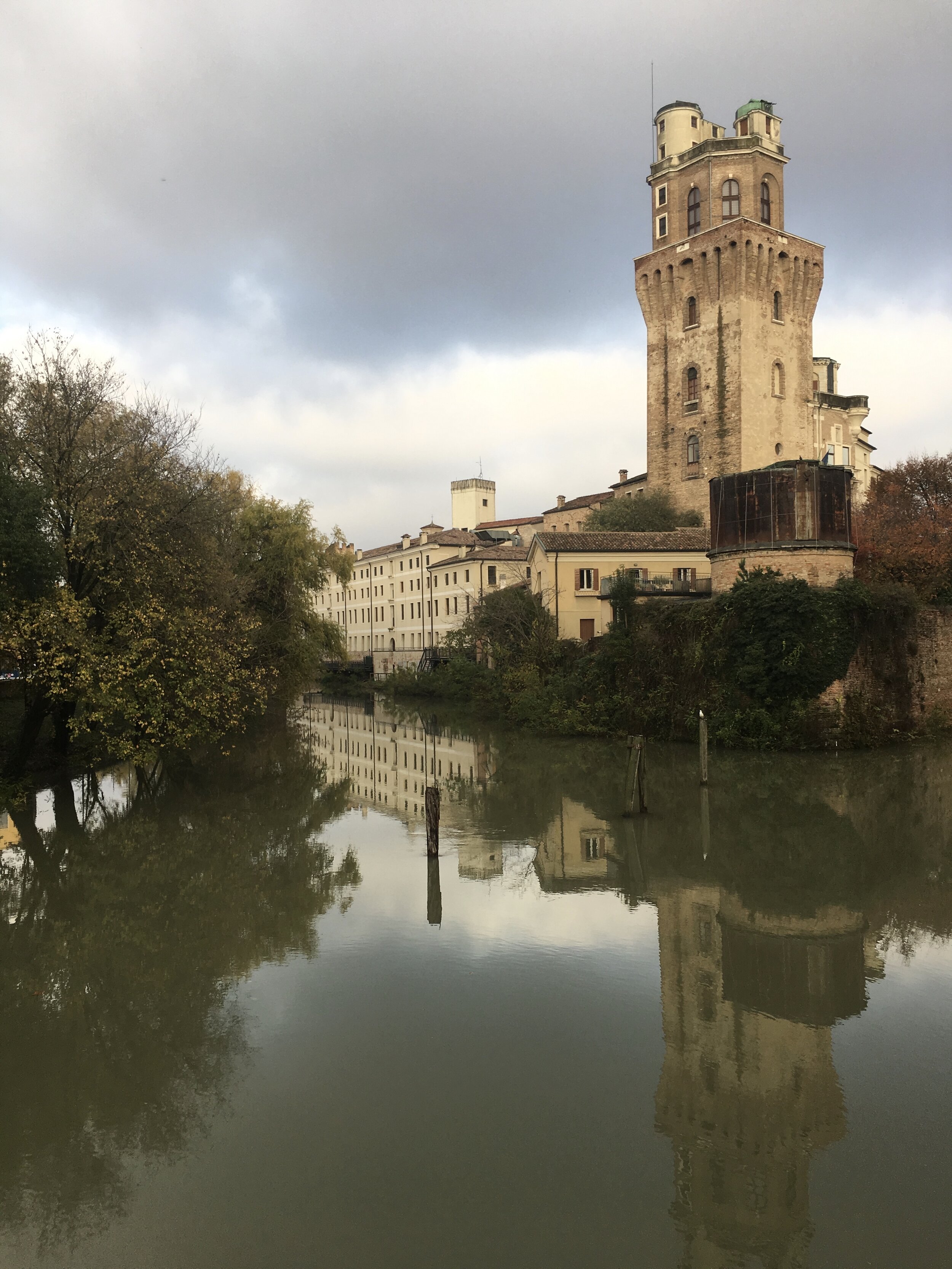Introduction to the city of Padova
Note: Padova is spelled ‘Padua’ in English and I opt for the Italian spelling throughout most of the following posts.
I have friends, who are now married, that met here during an Erasmus experience over a decade ago. They rave about the university and bike culture. Indeed, the city still felt calm and quaint when I finally made it there in late November of 2018. Similar to Bologna, there are many portici providing shelter as you explore the city and take in all the gorgeous views. A walk around Padova is perfectly picturesque. As we stayed in a functional but clean and reasonably priced Air B&B located just beyond the city center, it was suitable for our short stay. Our first scenic outlook was La Specola, a 9th century tower used as part of the fortifications for the city in medieval times. In her next life, the tower was used as a prison, then part of the Carraresi family castle in the 14th century, and more recently, in the 20th century, it was used as an astronomical observatory.
Continuing on under the accommodating portici, will eventually lead you to three interconnected central piazze; keeping with the university life scene these are perfect places to have an aperitivo. By name, these are the Piazza delle erbe, Piazza dei frutti and Piazza dei signori. As might be expected with piazze dedicated to herbs and fruit, there are markets to be found in the center of them; you will find the food related stalls open during the weekdays until 1.30 or 2 PM and Saturday almost all day. The piazza dei frutti food stalls are also open late on Thursday and Friday. The Piazza dei signori also has a market, but the stalls contain clothing, antiques and many other treasures, just not food. This piazza is distinctive because of the large clock tower, called the astronomical clock of Padua, constructed in the early 15th century.
In the midst of these great piazze is also the Palazzo della Ragione; construction started in the 13th century and it is one of the “largest medieval halls in the world.” On the ground floor, there is another market, but this one is covered; it has been there for 800 years. It is definitely worth a stroll around. If you duck into one of the alleyways off of these markets, you will find yourself in the narrow streets of the former ghetto. The history, starting with the name, is bleak, but the area has been reborn with a sense of liberty and life. Nowadays in this area you will find trendy and intimate bars and cafés to stop in for an aperitivo, such as Corte Sconta. Many bars do not open until 6 PM, so bear this in mind if you are craving an earlier drink.
You can find more information about the important basilicas of Sant Antonio (di Padova) and Santa Giustina in the spots section. I have highlighted the important Scrovegni chapel in my spots section with some more information about the history, but a practical word of advance: You will want to access this website and book (well in advance!) for the Scrovegni Chapel.


